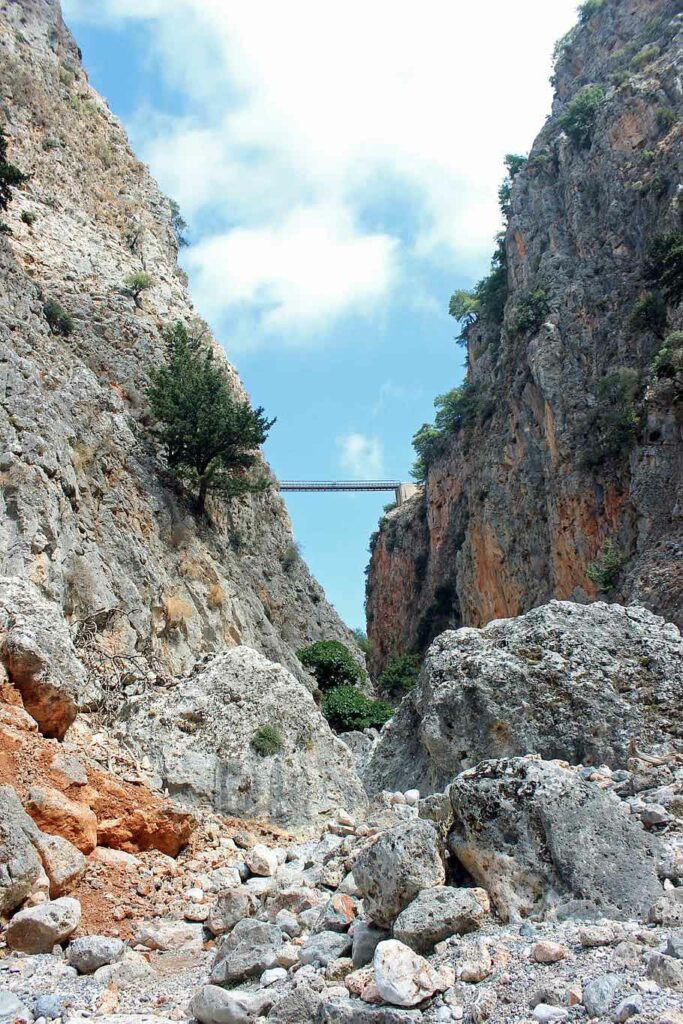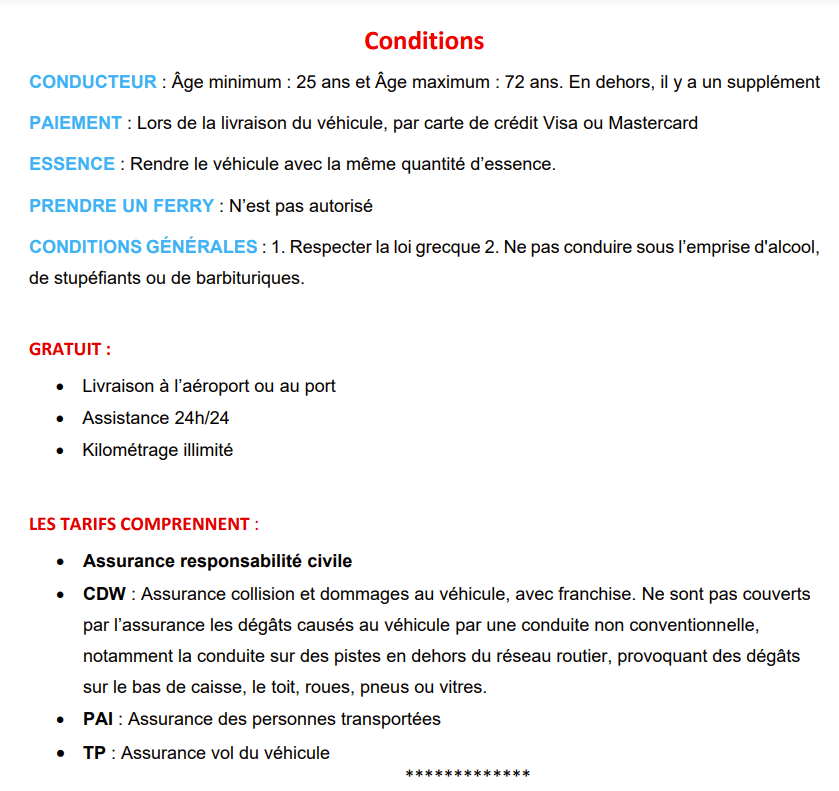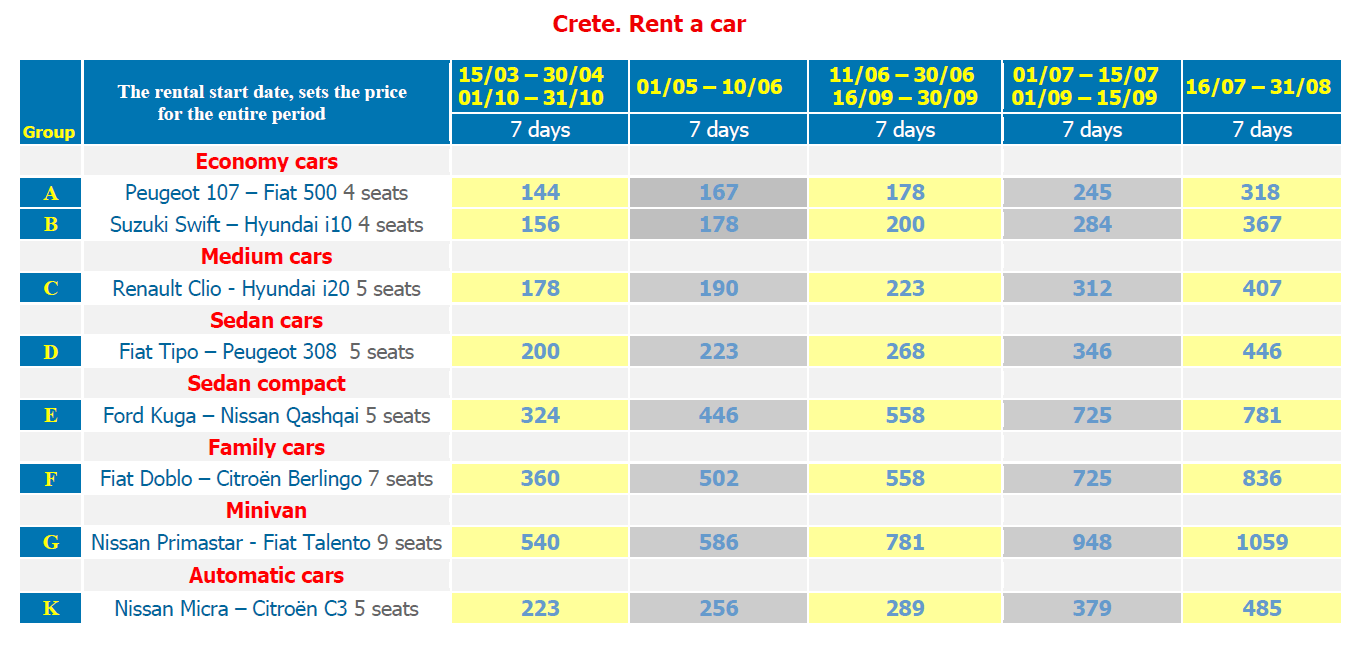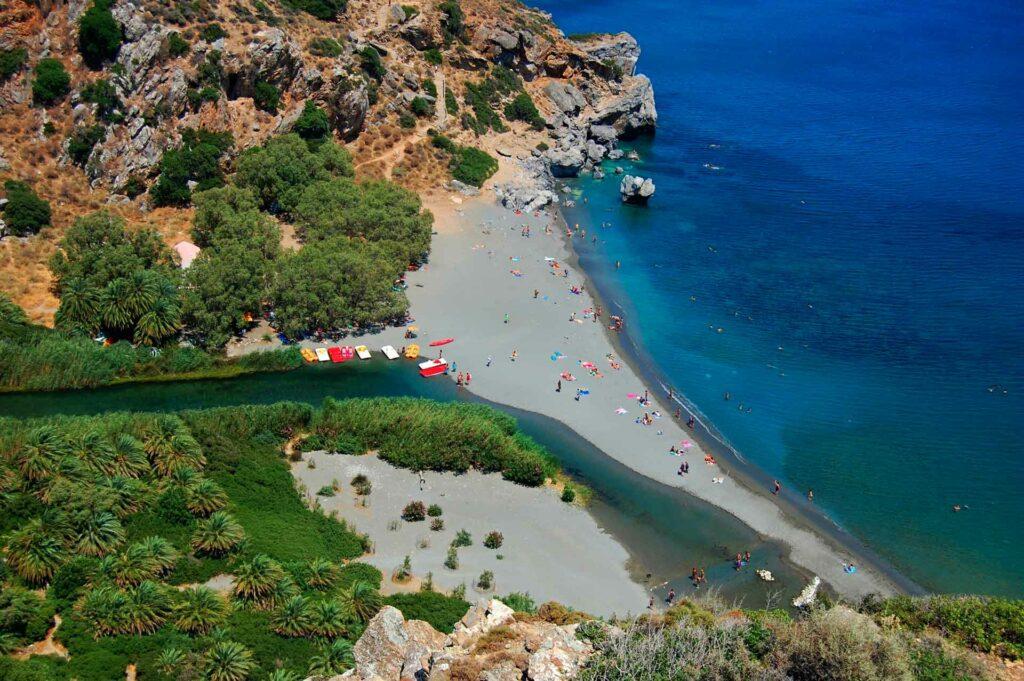Home » BLOG » Visit Crete » Akrotiri

Visit Crete from CHANIA
Monasteries in Akrotiri
The Akrotiri peninsula. Leaving Chania (Hania), head for the airport. This peninsula has an interesting and varied landscape.
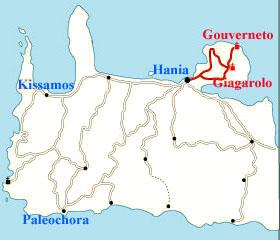
Flat inland, and on the coasts, barren mountains with cliffs and beautiful sandy beaches (Kalathas, Tersanas and Stavros in the north, Sternes and Marathi in the south). In Stavros the spectacular scene of the collapse of the funicular railway in the film "Zorba the Greek" with Antony Quinn, based on the novel by Nikos Kazantzakis, was shot.

For culture and history lovers, there are two beautiful monasteries, the elegant convent of Agia Triada (Holy Trinity), and Moni Gouverneto, which looks like a fortress from the outside, but is very welcoming as soon as you enter the courtyard, which is littered with lemon trees, orange trees and especially flowers.
These two monasteries are among the most beautiful monasteries in Crete and are well worth a visit. Beautiful sites, beautiful nature, Venetian and Byzantine architecture, a special atmosphere and, above all, a journey through history.
Monastery of the Holy Trinity (Agia Triada). Akrotiri, Crete
The monastery of the Holy Trinity Giagarolo (Tzagarolon or Tzagaroli) is an impressive monastery. It owes its name to its founders, Jeremiah and Lavrentio Giagarolo, two brothers from a wealthy Venetian family who had converted to Orthodoxy.
Construction began in 1612, but the plans Jeremiah brought were so ambitious that 30 years later the monastery was still not completed, despite the hard work he put into it.
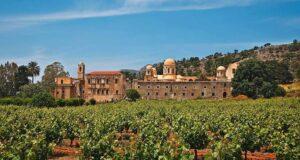
And then, in 1645, came our dear friends, the Ottoman Turks, who had a nasty habit of entertaining themselves by burning monasteries and slaughtering monks. In a rare moment of generosity, the Turks took pity on the two monks and decided to spare the monastery. They did not burn it down, but they did not allow it to be completed either, so that our poor Giagarolo brothers had to pray in a roofless church, in direct contact with Heaven! Their prayers, and those of the monks who lived after them, were answered two centuries later when, in 1834, after a great dinner given by the monks, the Turkish lord of the region allowed them to build the dome and complete the construction of the monastery. In the same year, the British explorer Robert Pashley visited the place and was impressed by its wealth and exquisite wine.
Their prayers, and those of the monks who lived after them, were answered two centuries later when, in 1834, after a grand dinner given by the monks, the Turkish lord of the region allowed them to build the dome and complete the monastery. That same year, British explorer Robert Pashley visited the site and was impressed by its wealth and exquisite wine.
The monastery church is in Byzantine style and is dedicated to the Holy Trinity. It has an impressive façade, a high bell tower (built in 18

(built in 1864) and two chapels, one dedicated to Zoodochos Pigi (the source of life) and the other to Ioannis Theologos.
64) and two chapels, one dedicated to Zoodochos Pigi (the source of life) and the other to Ioannis Theologos. Most of the cells of the monastery are closed, and the buildings need maintenance, but they have kept their grandeur intact. Inside the church you will find some beautiful wall paintings, but they only cover part of the church.
The surrounding landscape is also very beautiful. A thick olive grove stretches around the monastery, while the road leading to its gate is lined with tall cypress trees.
Monastery of Gouverneto
A Gr/E4 sign outside the monastery directs you to Gouverneto monastery, in the north.
The monastery was built by monks from the nearby monastery of Aghios Ioannis (of St. John), mentioned below, for whom the "path to the afterlife" was indeed very "painful.

As if the sacrifices and sufferings of the ascetic life were not enough, the pirates made the situation even worse. So, at some point - no one knows exactly when, but most scholars place it in the early years of Venetian rule - the monks abandoned their monastery of St. John and moved to a safer location in the south, where they built a proper monastery - a fort! This was surrounded by a thick rectangular wall, 40 x 50 metres, with square towers with embrasures and burners at all four corners. The burners were particularly useful for the defence of the place, as boiling water could be poured on the attacking enemy!
In the centre of the monastery courtyard is the church, dedicated to the Virgin Mary, " the August Queen of Heaven, Sovereign Mistress of Angels".. Its façade is very impressive, decorated with sculpted Venetian monster heads. There are also two chapels, one dedicated to St. John the Hermit, founder of the monastery of Aghios Ioannis, and the other to the "Aghii Deka" (the Ten Saints). Unfortunately, there is very little to see inside the church, as all the precious relics and icons were destroyed in 1821, when the Turks burned the monastery and massacred the monks. Today, only two monks live in the monastery and they are only threatened by the hundreds of tourists who arrive every day in July and August... If, however, you visit the monastery in spring or autumn, you will feel welcome.
Today, only two monks live in the monastery and they are only threatened by the hundreds of tourists who arrive every day in July and August... However, if you visit the monastery in spring or autumn, you will feel very welcome.
Moni Katholiko
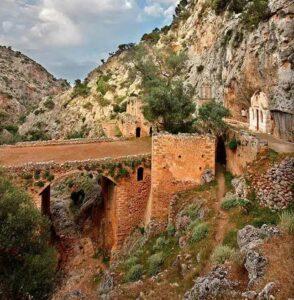
From the monastery of Gouverneto, a path leads north into an impressive and majestic gorge called Avlaki.
After about half an hour's walk, you will arrive at the abandoned monastery of Aghios Ioannis, better known as Moni Katholiko. Built during the 6th or 7th century on the side of a steep gorge in the heart of the rugged Akrotiri landscape, Moni Katholikou is probably the oldest monastery in Crete.
Its founder is said to be none other than Saint John the Hermit, who spent his life in this region. The monastery church is carved out of the rock, and only the west side is made of stone.

An imposing stone bridge some 50 metres long and 15 metres wide stretches in front of the monastery, joining the two sides of the gorge at a height of 30 metres. This bridge also serves as the monastery's courtyard.
In the early Christian era, and long before the monastery was built, the caves surrounding it, still visible today in the steep walls of the ravine, were inhabited by hermits. In the largest of them (135 metres deep), St. John the hermit spent a life of seclusion and died peacefully. Its 2 x 1.8 metre opening is located to the left of the monastery church and can be easily explored with a good torch.
If you wish to explore the area further, you can continue past the bridge and follow the rough path which, after twenty minutes, will lead you to the rocky shore where the small monastery harbour was once located. Although there is no sand to lie on, the water is crystal clear, ideal for a quick and refreshing dive.
Rent a car in Greece: Crete (Heraklion, Chania, Rethymnon, Agios Nikolaos) – Athens – Rhodes – Corfu – Mykonos – Santorini – Thessaloniki – Preveza/Aktion/Lefkada – Patras/Araxos – Kalamata – Paros – Syros – Kos – Naxos – Lesbos – Thassos – Zakynthos/Zante

